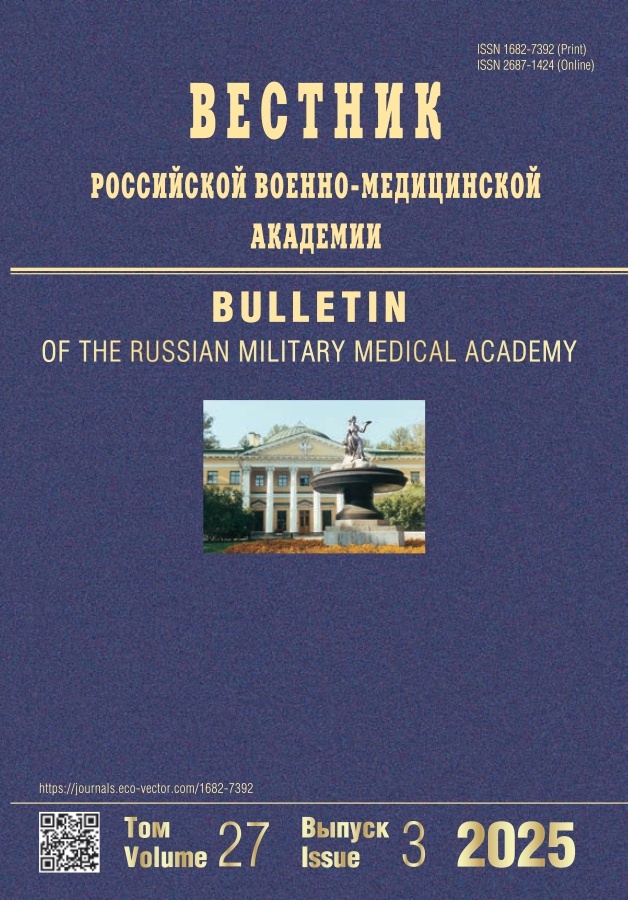VOZMOZhNOST' PRIMENENIYa GENOMNOGO REDAKTIROVANIYa V LEChENII NEYRODEGENERATIVNYKh ZABOLEVANIY
- Authors: Vetchinova AS1, Abramycheva NY.1, Fedotova EY.1, Illarioshkin SN1
-
Affiliations:
- Научный центр неврологии
- Issue: Vol 20, No 3S (2018)
- Pages: 20-23
- Section: Articles
- URL: https://journals.rcsi.science/1682-7392/article/view/13195
- ID: 13195
Cite item
Full Text
Abstract
Full Text
##article.viewOnOriginalSite##About the authors
A S Vetchinova
Научный центр неврологииМосква
N Yu Abramycheva
Научный центр неврологииМосква
E Yu Fedotova
Научный центр неврологииМосква
S N Illarioshkin
Научный центр неврологииМосква
References
- Абрамычева Н.Ю., Лысогорская е.В., Шпилюкова Ю.С. и др. Молекулярная структура бокового амиотрофического скле- роза в российской популяции // Нервно-мышечные болезни. 2016; 4: 21-27.
- Васильева е.А. Применение системы направленного геномного редактирования CRISPR/Cas к плюрипотентным стволо- вым клеткам // цитология 2015; 1: 19-30.
- Иллариошкин С.Н. Современные представления об этиологии болезни Паркинсона // Неврол. журн. 2015; 4: 4-13.
- Иллариошкин С.Н., Иванова-Смоленская И.А., Маркова е.Д. ДНК-диагностика и медико-генетическое консультирование в неврологии. М.: МИА, 2002.
- Лебедева о.С., Лагарькова М.А., Иллариошкин С.Н. и др. Индуцированные плюрипотентные стволовые клетки: новые воз- можности в нейробиологии и нейротрансплантологии // Анналы клинической и экспериментальной неврологии 2011; 4: 37-45.
- Alexander G.M., Rogan S.C., Abbas A.I. et al. Remote control of neuronal activity in transgenic mice expressing evolved G protein- coupled receptors // Neuron 2009; 63: 27-39.
- An M.C., Zhang N., Scott G. et al. Genetic correction of Huntington’s disease phenotypes in induced pluripotent stem cells // Cell Stem Cell. 2012; 11: 253-263.
- Chen K., Gao C.J. TALENs: customizable molecular DNA scissors for genome engineering of plants // Genet. Genomics 2013; 40: 271-279
- Chen Y., Xiong M., Dong Y. et al. Chemical control of grafted human PSC-derived neurons in a mouse model ofParkinson`s disease // Cell Stem Cell 2016; 18: 817-826.
- Cunningham M., Cho J.H., Leung A. et al. hPSC-derived maturing GABAergic interneurons ameliorate seizures and abnormal behavior in epileptic mice // Cell Stem Cell 2014; 15: 559-573.
- Ghiglieri V., Calabrese V., Calabresi P. Alpha-synuclein: from early synaptic dysfunction to neurodegeneration // Front. Neurol. 2018; 9: 295.
- Jonsson T., Atwal J.K., Steinberg S. et al. A mutation in APP protects against Alzheimer’s disease and age-related cognitive decline // Nature 2012; 488 (7409): 96-99.
- Keatinge M., Bui H., Menke A. et al. Glucocerebrosidase 1 deficient Danio rerio mirror key pathological aspects of human Gaucher disease and provide evidence of early microglial activation preceding alphasynuclein-independent neuronal cell death // Hum. Mol. Genet. 2015; 24: 6640-6652.
- Li Y., Moore R., Guinn M., Bleris L. Transcription activator-like effector hybrids for conditional control and rewiring of chromo- somal transgene expression // Sci Rep. 2012; 2: 897.
- Ma L., Hu B., Liu Y. et al. Human embryonic stem cell-derived GABA neurons correct locomotion deficits in quinolinic acid-lesio- ned mice // Cell Stem Cell 2012; 10: 455-464.
- Moynahan M.E., Jasin M. Mitotic homologous recombination maintains genomic stability and suppresses tumorigenesis // Nat. Rev. Mol. Cell Biol. 2010; 11:196-207.
- Pires C., Schmid B., Petrжus C. et al. Generation of a gene-corrected isogenic control cell line from an Alzheimer’s disease patient iPSC line carrying a A79V mutation in PSEN1 // Stem Cell Res. 2016; 17: 285-288.
- Wang X., Cao C., Huang J. et al. One-step generation of triple gene-targeted pigs using CRISPR/Cas9 system // Sci Rep. 2016; 6: 20620.
- Sreedharan J., Blair I.P., Tripathi V.B. et al. TDP-43 mutations in familial and sporadic amyotrophic lateral sclerosis // Science 2008; 319 (5870): 1668-1672.
- Sternson S.M., Roth B.L. Chemogenetic tools to interrogate brain functions // Annu. Rev. Neurosci. 2014; 37: 387-407.
- Soldner F., Laganiere J., Cheng A. et al. Generation of Isogenic Pluripotent Stem Cells Differing Exclusively at Two Early Onset Parkinson Point Mutations // Cell 2011; 146: 318-331.
- Williams A.J., Paulson H.L. Polyglutamine neurodegeneration: protein misfolding revisited // Trends Neurosci. 2008; 31: 521-528.
- Xiong X., Chen M., Lim W.A., Zhao D., Qi l.S. CRISPR/Cas 9 for humangenome engineering and disease research. Annu. Rev. Genom. Hum. Genet. 2016; 17: 131-154.
Supplementary files







